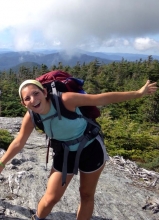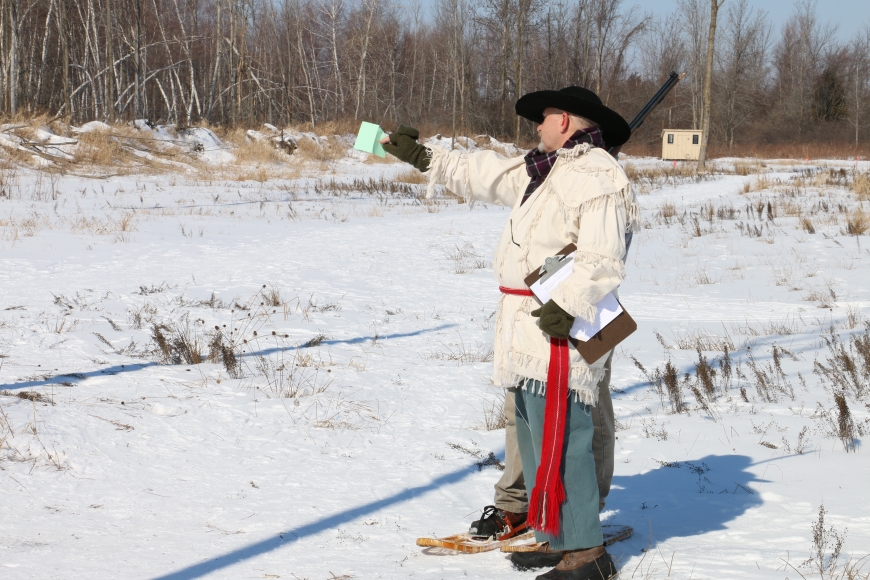
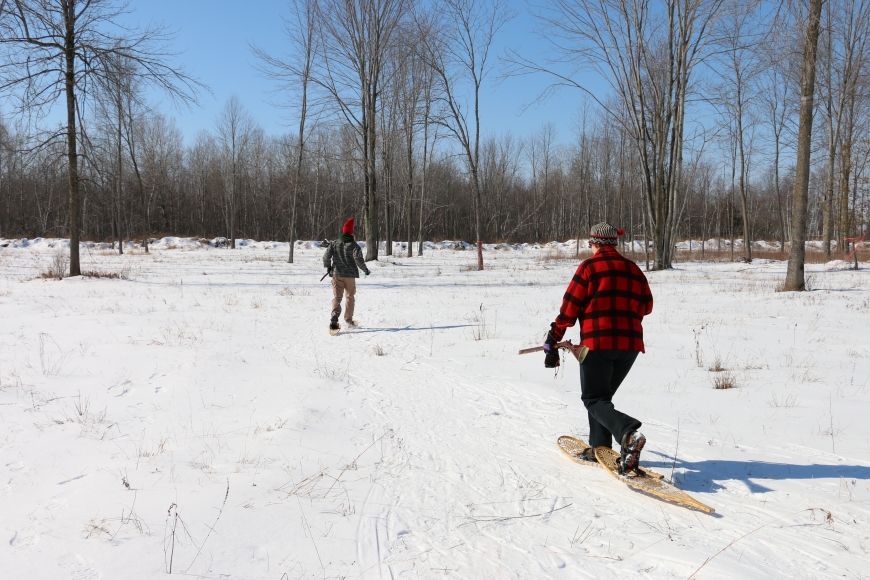
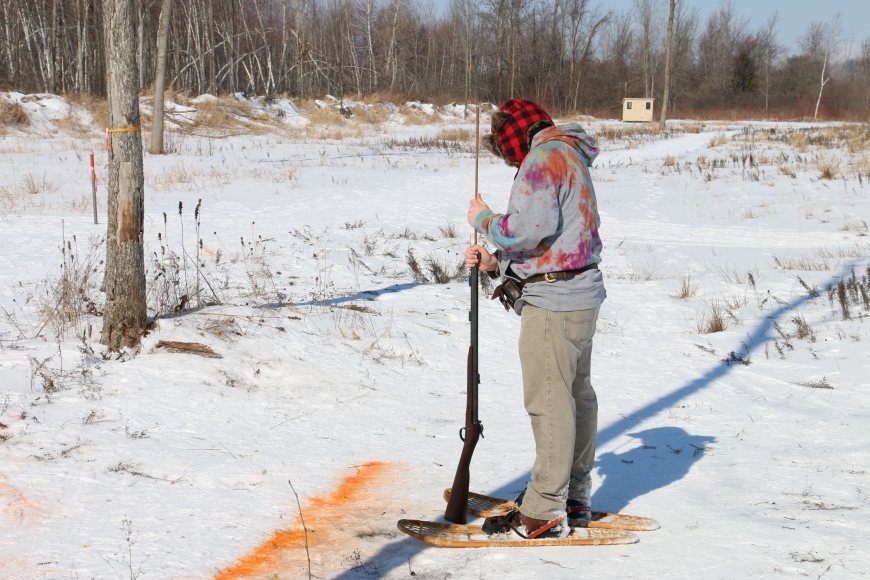
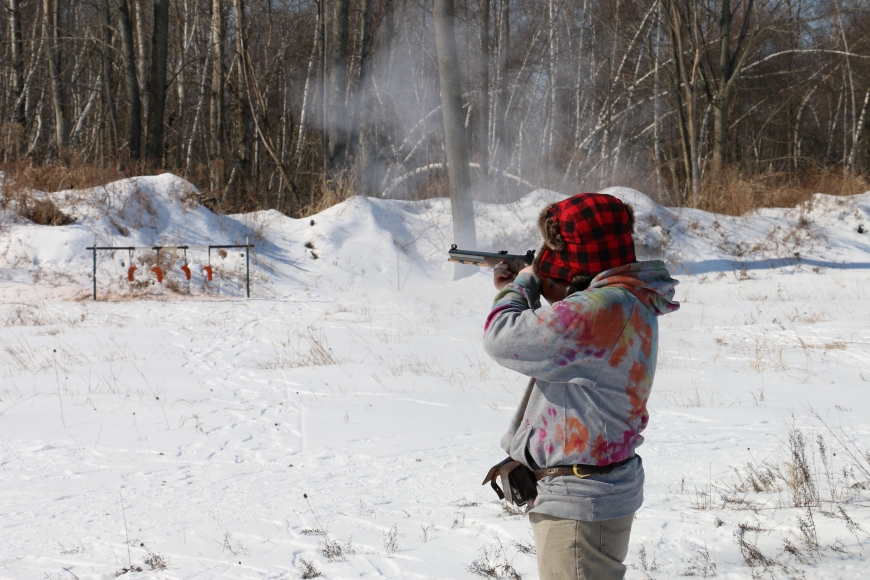
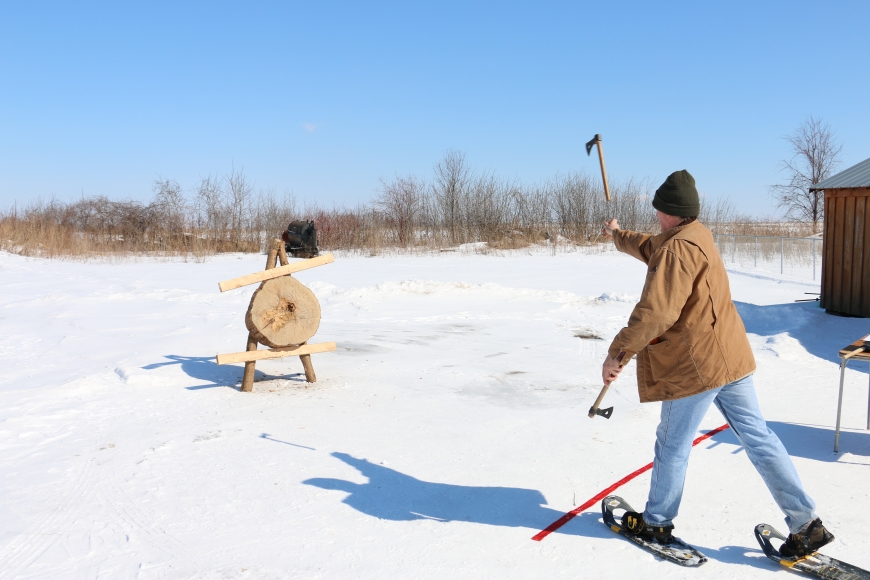





Lisbon Primitive Snowshoe Biathlon 2016
On a clear late-winter day a man walks through a birch forest, his ash-framed snowshoes crunching over the crusty snow. Swinging by his side is his shooting pouch holding black powder, and in his left hand is a flintlock muzzleloader. He stops, takes out his black powder and loads the rifle while eyeing up the nearby targets. As he aims there is a brief pause as if everything in the woods held its breath just before the ear-blasting pop from the rifle shot rings.
No, I’m not describing a scene from the French-Indian War – I’m talking about the Primitive Snowshoe Biathlon, held March 5th and 6th 2016 in Lisbon.
This wasn’t an Olympic-style biathlon combining cross country skiing and rifle shooting. In this biathlon, participants run and walk a 1.5 mile course in wooden-framed snowshoes, stopping at various points along the trail to shoot at targets with traditional-style muzzleloaders. The oldest firearms on Earth, muzzleloading rifles were first used in the beginning of the 17th century. Despite the fact that they are significantly more difficult to load than modern rifles, they are still favored by some for hunting, and can also be seen in historical reenactments.
On the first weekend in March, participants and supporters from Vermont, Pennsylvania, New Hampshire, Michigan, and throughout New York gathered at the St. Lawrence Valley Sportman’s Club in Lisbon to participate in this unique event. The course winds through the woods for about a mile and a half, with stopping points at five shooting stations. At each station, participants shoot two times, and every time he or she hits a target, five minutes are taken off their overall time; the participant with the lowest time wins. In this specific event, competitors also had the chance to win bonus points at the end of the course by throwing tomahawks at a target.
“It’s like a track meet,” said one competitor from Vermont. "You aren’t really competing with your competitors as much as you are competing with yourself to get your best time."
So how did people get involved in this sport? Since its first competition in Smuggler’s Notch, Vermont in 1995, the sport has grown to include several competitions throughout Vermont, and in New York, New Hampshire, and Pennsylvania. While the sport originally developed through a club or group of people interested in finding a new, fun way to enjoy the winter, people decide to get involved for a variety of different reasons. Most people hear about it from friends or family and get involved through them, but come with a background in shooting, black powder, or an interest in early American history. One competitor described the main appeal of this sport being its unique use of primitive guns and black powder. He believed that this is precisely what makes the sport challenging and fun, because it forces you to rely on skill and not “the technology race.” Furthermore, using black powder strips the shooting of its ‘survivalist’ aspects and purely focuses on the sport of it. Shooting with black powder requires true marksmanship; one competitor described it by saying, “black powder is as useful as a golf club.”
Others are drawn to primitive biathlons because of the inclusive nature of the sport and its community. While participants enjoy the competitive aspects of the biathlons, they all agreed that the camaraderie between participants is far greater than the competition between them. As one Vermont competitor said, “If I was having trouble, he could be my stiffest competition and he’d be willing to help me.” There is definitely a tight-knit community surrounding this sport that so creatively combats winter boredom while celebrating history and skills of our region’s early settlers.
***
The event in Lisbon was put on by the Fort de La Presentation Association, an Ogdensburg-based non-profit working to reconstruct the Fort de la Presentation, a historic fort built by the French in 1749, and Forsyth’s Rifles, a historical reenactment group also based in Ogdensburg. Proceeds from the event benefited the construction of a recreation trail on Ogdensburg’s Lighthouse Point.
In addition to this waterfront trail, the park at Lighthouse Point will include a variety of historic buildings, picnic areas, an amphitheater and more. You can learn more about this project here: http://www.fort1749.org/

